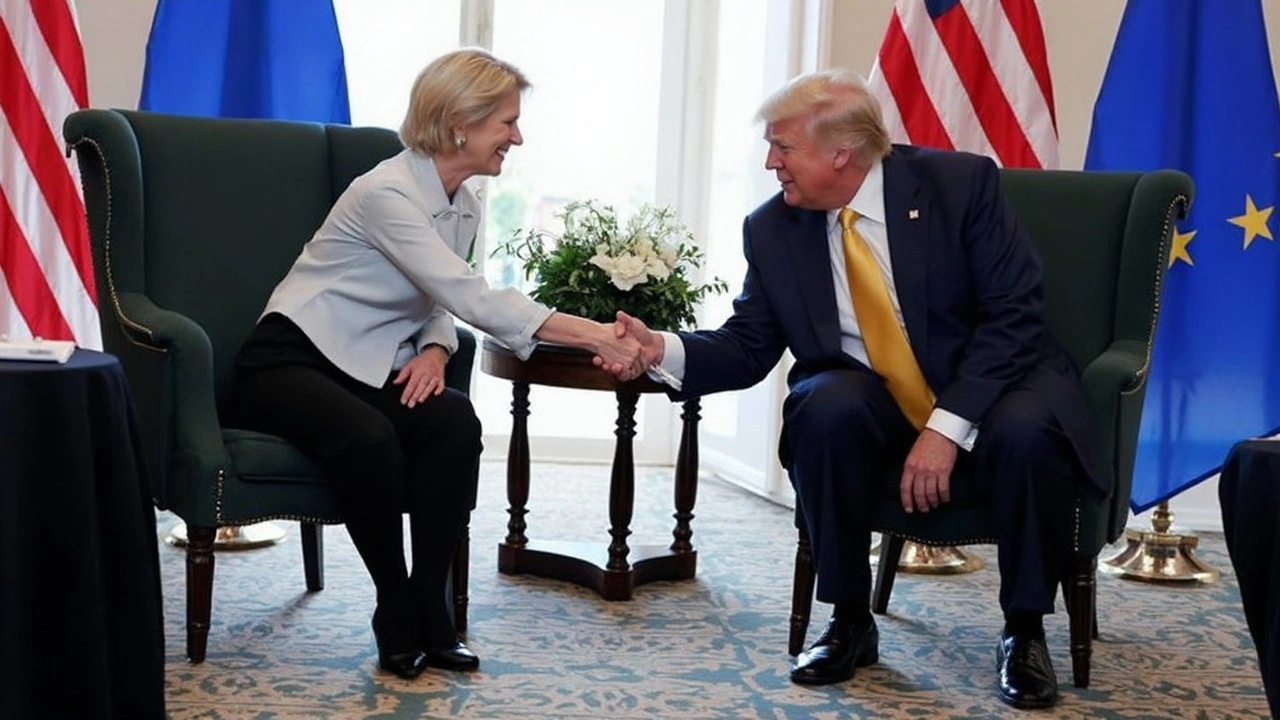US and EU Ink High-Stakes Trade Deal: 15% Tariffs Recast Global Markets
The business world is buzzing after President Donald Trump and European Commission President Ursula von der Leyen announced a landmark trade agreement on July 28, 2025, while meeting in Scotland. For anyone following global economics, this deal represents a major shakeup. The new pact slaps a 15% tariff on most goods coming into the US from the European Union, replacing a patchwork of earlier rates. That’s not all—the EU is lining up to buy more than $750 billion in American energy over the next few years and will inject an extra $600 billion into US industries on top of what they already invest.
Trump wasted no time calling this “the biggest deal ever made.” Big words, but there's some muscle behind them. The European side isn’t just opening up its markets to more US manufacturing—think aircraft parts, farm equipment, and pharmaceuticals—they're also committing to buy American military hardware. Von der Leyen struck a diplomatic chord, saying the deal brings stability and predictability back to transatlantic business, which has been rocky lately.
Winners, Losers, and Lingering Questions
These tariffs didn’t come out of nowhere. German carmakers like Mercedes, BMW, and Audi were already feeling the pinch with 25% duties on their exports to the US since April. Other goods were hit with 10% tariffs. Now, it’s a flat 15%. For some, that’s a relief; for others, especially those who’ve gotten used to the smoother pre-2018 trade landscape, it’s a tough pill. The EU is America’s top trading partner. In 2024, Europe sent over $600 billion worth of goods to the US, while America sold $370 billion the other way. That gap—America’s trade deficit with the EU—has been a sore spot for Trump, and this deal is clearly meant to tackle it head-on.
So what’s actually changing for businesses? European exporters now must navigate tariffs that, though smaller than some feared (Trump used to talk about 30% rates), will squeeze profits and might mean higher prices for US consumers. On the upside, opening up EU markets to American-made products is expected to help US manufacturers find new customers. The energy and defense sectors stand to gain the most, considering the scale of the EU’s promised purchases.
The deal is about more than just tariffs. It’s also meant to resolve the endless disputes over sector-specific rules and "non-tariff barriers," which have slowed trade and created headaches for both big business and regulators. What those solutions look like still isn’t clear—negotiators have some details left to hammer out.
Analysts and industry groups are watching closely. Many see this agreement as dialing up protectionist policies—the era of freewheeling, borderless trade is slipping further into the rearview mirror. Inflation watchers warn that higher tariffs often feed into prices down the line. But at least for now, a broader trade war looks less likely. Trump’s administration set the tone with a similar deal with Japan just days before, signaling this might be the new normal for how Washington wants to handle its economic relationships.
No matter which side you’re on, this deal is going to shape not only the flow of goods and money across the Atlantic, but also the wider conversation about how much governments should interfere in trade. In the end, shoppers, workers, and businesses on both continents will feel its effects in their wallets and their jobs.
